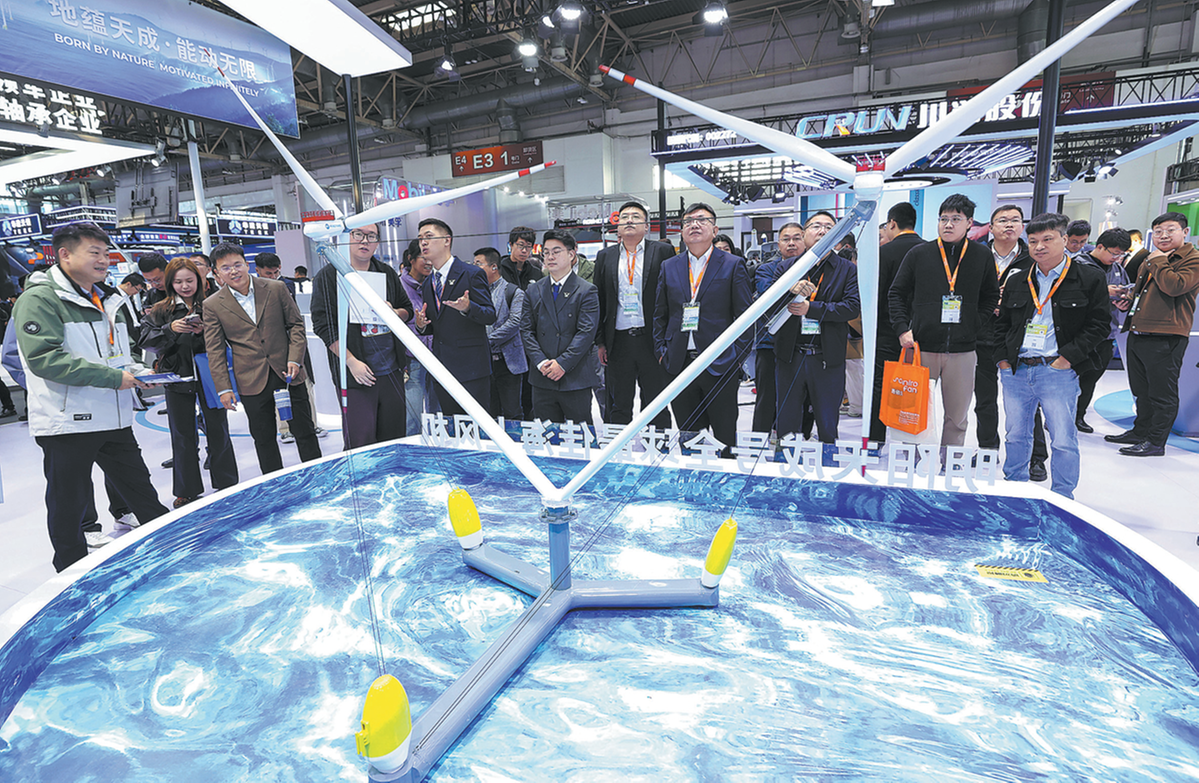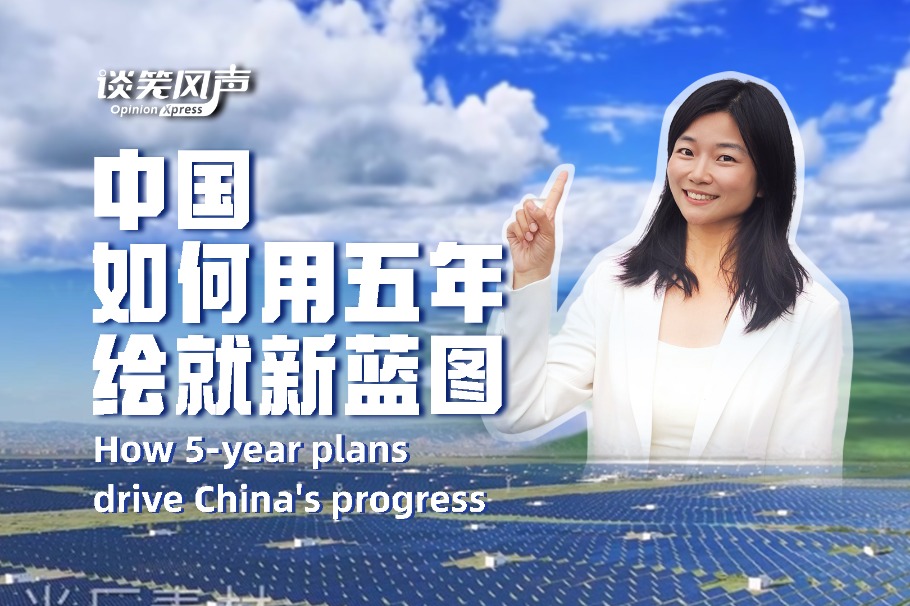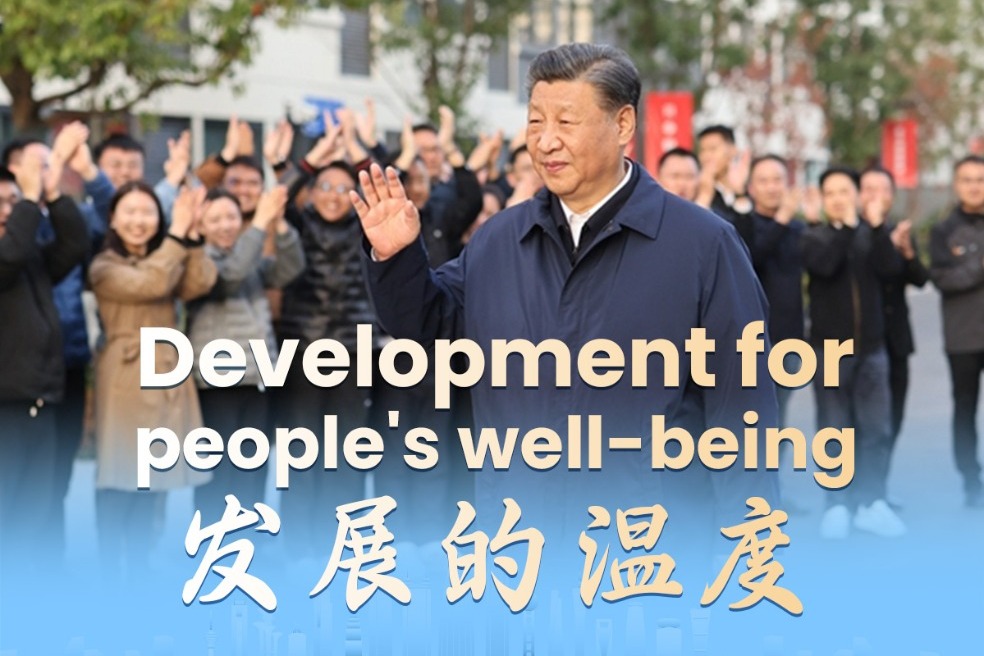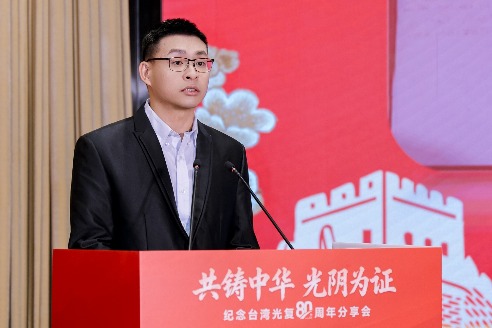UHV grid powers up to spur nation's green development
Advanced transmission system key to boosting use of renewable energy


China's ambitious nationwide ultra-high voltage, or UHV, grid is fundamentally transforming the country's energy system, driving a significant acceleration in its transition toward cleaner power sources and reshaping how electricity is delivered across the nation, said industry experts.
The ambitious nationwide UHV network, capable of transmitting electricity over vast distances with minimal loss, has become a linchpin in the country's strategy to move vast amounts of clean energy generated in its less populated western regions to the densely populated industrial hubs in the east, they say.
"China has been continuously strengthening its grid connection and transmission projects, which have significantly enhanced the ability to optimize renewable energy resources across wide areas," said Ye Xiaoning, a senior engineer at the new energy department of the State Grid Energy Research Institute.
"The country's sprawling UHV grid has fundamentally reshaped the country's energy landscape, facilitating the rapid integration of renewable power and electrifying key sectors from high-speed rail to electric vehicles."
UHV transmission lines refer to power transmission cables operating at voltages exceeding 800 kilovolts of direct current or 1,000 kV of alternating current.
Compared with traditional transmission lines, UHV lines not only increase transmission capacity and extend transmission distances, but also reduce transmission losses. This technology is crucial for connecting remote renewable energy sources in the west to demand centers in the east.
Ye said China has invested heavily in UHV technology, establishing a global lead in its construction and operation.
The grid not only boosts energy efficiency and reduces reliance on fossil fuels, but also enhances grid stability and reliability across the world's second-largest economy, he said.
This is especially crucial amid the backdrop of rapid advances in China's vast EV fleet and its extensive high-speed rail network.
According to the institute, China had established 42 UHV transmission lines by the end of last year, creating a comprehensive and resilient grid backbone.
Grid operators, including State Grid Corp of China and China Southern Power Grid, have consistently bolstered projects for connecting and transmitting new energy, centralizing the rollout of numerous transmission initiatives both within and between provinces.
The volume of power transferred across different regions and provinces across the country continues to expand, with interregional transmission increasing by 9 percent and interprovincial transmission by 7.1 percent compared to the previous year, it said.
State Grid, the nation's largest power grid operator, has been actively stepping up investment in the construction of UHV power transmission projects in recent years, enabling efficient long-distance transmission of massive amounts of power.
It said earlier that it would invest a record of over 650 billion yuan ($91.26 billion) in the country's power grid this year, up from 600 billion yuan in 2024.
State Grid recently put into operation the plus-minus 800 kV Longdong-Shandong UHV DC line, with a total investment of 20.2 billion yuan.
It is the first time that 1.05 million kW of energy storage capacity has been configured at the sending-end base, it said.
The line will also drive the upgrade and innovation of electrical equipment manufacturing and related industries, advancing China's high-end equipment manufacturing and building a modern power industry system, said Zhang Zhigang, chairman of State Grid.
The continuous expansion and technological refinement of the grid are central to China's long-term energy security and environmental objectives, setting a precedent for how large nations can manage a complex transition to a sustainable energy future, said industry experts.
China, currently operating the world's most advanced power grid following massive investments and technological advances, has dramatically transformed its power grid security and reliability in recent years, said Zhou Xia, director-general of the center of power reliability management at the China Electricity Council.
China's electricity system has undergone "leapfrog development", with power supply reliability across China reaching 99.92 percent last year, up 0.013 percentage point year-on-year and a significant rise from the early 1990s, when urban residents faced an average of 96.54 hours of power outages every year, she said.
Today's Top News
- CPC Central Committee to hold news conference on plenary session
- CPC plenum concludes, adopting recommendations for China's 15th Five-Year Plan
- China to hold economic and trade talks with US in Malaysia
- AI integration improving productivity across sectors
- Taiwan compatriots invited for anniversary
- Financial sector mobilizes to support high-quality growth






























